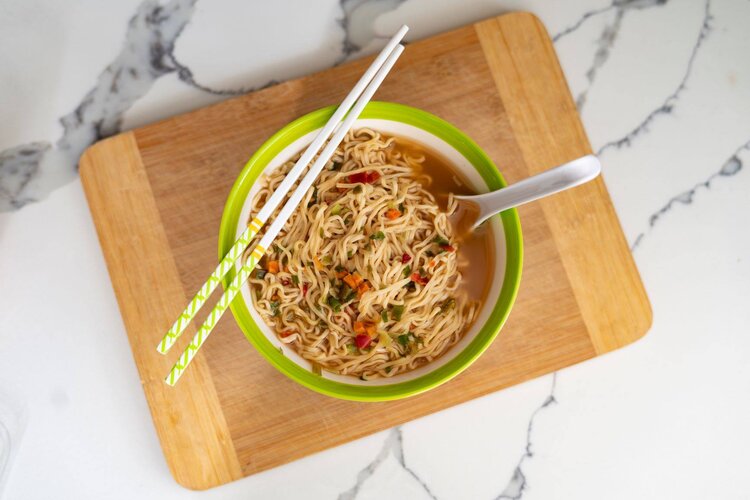
Gitting Gud: The Journey to Better Ramen
Share

Gitting Gud: The Journey to Better Ramen
If you’ve been following Vite Ramen for a while, you’ve probably noticed we’re keen on continuous improvement. A wise man once said, “it is important to draw wisdom from many different places.” (Uncle Iroh, in the interests of full disclosure.) That’s precisely how we approach our ramen. We’re continually building in new insights to improve our formula, both in nutritional value and taste. Here’s a quick peek into two of our more recent ramen upgrades.
Potassium Power-ups
From day one, we’ve squared up to one big problem with conventional ramen — sodium. Regular instant noodles are packed with the stuff, which is far from desirable if you’re worried about avoiding tons of salt.
In our search to balance sodium and potassium, we initially settled on potassium citrate. It helped serve as a source of nutritional potassium, as well as increase the perceived saltiness of the ramen but with far less actual salt. We encountered a small but significant problem, though. Roughly one percent of the population experiences the flavor of potassium citrate differently. For these folks, it tastes bitter and medicinal.

Why? Our theory is that it’s genetic, similar to how some people can’t stand cilantro.
Anyway, we knew we had a problem in need of a solution. After sampling and searching far and wide, we found the solution: a specialized form of potassium in a proprietary bound form! It was amazing stuff; it helped our ramen taste appropriately salty by increasing the nutritional postassium!
So, less unhealthy sodium, better taste, and a nutrition boost. Triple-threat.
A Bioavailability Boost
Bio-what-now? Bioavailability, or your body’s ability to absorb a given nutrient.

Nutritional labeling doesn’t shed any light on a nutrient’s bioavailability, but it’s really important, and it’s something we’ve worked on enhancing as we’ve refined our approach.
Here’s an example of bioavailability and why it matters. Our bodies need the mineral, magnesium. Magnesium oxide has the highest percentage of elemental magnesium, so you’d think it’d be the ideal way to get that nutrient, right?
The snag is that magnesium oxide is not highly soluble, which means your body isn’t very efficient at absorbing it. It has tons of what you need, but it simply passes through your body without giving you any benefit. It’s not bioavailable. Magnesium gluconate, on the other hand, is easily assimilated and tolerated by the body. This stuff is more bioavailable.
We’ve made sweeping changes to our micronutrients to enhance bioavailability as new scientific evidence has come to light on how best to get vitamins and minerals into the body.
Our latest ramen recipe is optimized to give you a better source of vitamin A, folate, vitamin K, vitamin B6, vitamin B12, vitamin D, vitamin E, magnesium, zinc, copper, calcium, selenium, manganese, molybdenum, (keep reading, we’re nearly there!), iron, and potassium. Phew.
If you enjoy the science check out our patch notes here for more detail.
Our State of the Noodle Address

Looking over all the improvements we’ve made to Vite Ramen noodles, we feel pretty flipping happy with how far we’ve come. It’s a recipe we can manufacture reliably, it tastes fantastic, and it’s good for you.
We’ve learned a lot from many sources. And all of it has come together to make a product we believe in.
We’d like to think Uncle Iroh would be proud.
